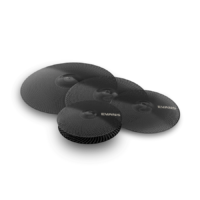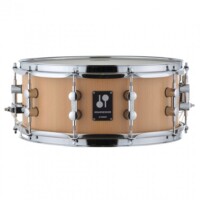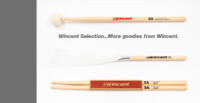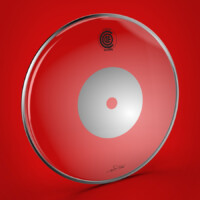| Every so often, something happens which makes you question your judgement. I thought I knew the Alesis DM10 quite well. I”ve seen it at trade shows over the last 4 years, I”ve played it in stores, and I”ve heard lots of reports from various sources.
So when Alesis told me they were going to send me the new DM10X Mesh kit, I thought I knew what to expect. However, over the last few weeks I”ve proved to myself that I really didn”t know the latest version of this kit at all. I was expecting a bit of an ”also ran” to be perfectly honest, but I”ve got to say that this kit really surprised me. There are some amazingly good parts to this kit and some real surprises in the functions. And, of course, that also has some parts which I didn”t like quite so much, but for the moment let”s not worry about those. In case you were wondering, the DM10X kit is Alesis” first fully mesh headed kit. While this might raise some eyebrows amongst those of you who know anything about the electronic drum market, this is, I feel, the first of a new wave of mesh headed kits which will be available over the next few years. There”s actually two versions – the one I have here with larger pads and another ”Studio” version with smaller pads (and a smaller price). Whether you like mesh or not, it has gained (rightly or wrongly) the reputation of something only found on more expensive kits. However, before we go any further just have a look and see what price the DM10X kit is going for and consider that as you read the review. |
Now, for that price you get a 12 inch snare, 2x 10 inch toms, 2x 12 inch toms and an 8 inch bass drum pad, a 12 inch hi hat pad, 2x 14 inch crashes, and a 16 inch ride. You also get a hi hat pedal, all the relevant mounting hardware including a very decent rack, plus all the cabling you will need. And of course, you get the DM10 module itself. If you have played to the DM10 kit before, it was probably the version with the real Mylar drum heads. If you remember, these were the black gloss drumheads which were very, very noisy. Because the pads were so noisy, they made it hard to hear what was actually coming out of the module. Now we have nice quiet mesh head pads, we can actually hear that the module is really rather good. In fact, it”s very good. But before we go any further, what about these pads? Well, they aren”t going to win any prizes for expensive design. The pad itself is actually two pieces of plastic – one backplate and one very shallow plastic shell. On top of that sits the mesh head, followed by the conventional steel rim which is held on with the usual tension rods, and rim dampening rubber is also provided in the (substantial, single) box. The heads themselves on the UK models is a twin ply head which isn”t bad but it does stretch easily so you may find yourself re-tensioning the head quite regularly until it settles down. US versions only have a single ply head and to be honest I feel a little sorry for the Americans, the twin ply heads are much better than any single ply head. If you seen inside other mesh pads, you”ll probably know that there is usually a single foam cone underneath the head which picks up the vibrations. This is a perfectly adequate design but it does mean that there is usually a ”hot spot” in the middle, over the cone, where the pad is certainly much more sensitive. Alesis have taken this design and changed it around a little. On the DM10X pads there are four foam towers, equally spaced around the centre of the head. This means that there is a larger sweet spot, or hotspot, but it is much less noticeable than the single foam cone version. I won”t go into any more technical detail about the differences, but I”ve got to say that the Alesis version work very well, particularly with the DM10 X module and is probably a more logical design than previous ones. |
Out of curiosity, I replaced some of the supplied mesh heads with some triple ply mesh heads that I happen to have a kicking around. I”ve got to say there was a marked improvement to the feel although the triggering was just as good. Fitting out the kit with a set of triple ply mesh heads would be a very good, and cheap, way to improve the overall feel of the kit. Like I said there”s nothing wrong with the head supplied, but it”s a very easy tweak to make it feel even better. Lets face it, the first thing you probably do when you buy an acoustic kit is change the heads, so there”s not much difference. The plastic and rubber cymbal pads are my least favourite part of the kit. Don”t get me wrong, there is nothing bad with them, they just aren”t quite as good as the drum pads are! They feel quite light, but to be honest for the price you can”t really argue. In fact although the cymbals might be my least favourite part, I don”t think it”s the actual cymbal pads themselves which I don”t like, it”s actually the fact that that isn”t quite enough control inside the module to get the best out of them (for me anyway, you might be fine). The hi hat controller is very good and is continuously variable, for a better feel and sound. Overall, the kit feels great, especially when the price is taken into account, but I”m saving the best till last… The DM10 module is amazing value for money. |
If you”ve played to the DM 10 module before, you”re probably wondering what on earth I am on about. I must admit, I was surprised myself. However, as I discovered, to get the best out of the module you need to sit down with it for a while. The internal preprogrammed kits hint at what you can get out of it but with a little tweaking here and there you can get some really, really good and very realistic results out of this box. I really like the fact that Alesis have not tried to disguise the name of the samples that they have used. For instance there are some really nice, clean Gretsch and Yamaha toms. There are some nice Bosphorus rides, some nice Ludwig, Pearl and Baltimore snares and one particular bass drum sample that might, or might not, have once belonged to a very famous jazz drummer (weirdly, the bass drums don”t go into so much detail name wise). So, with a little tweaking (and you can tweak quite a lot) – maybe pitching stuff down, layering the sounds up etc – you”ve got some really great sounds. On the subject of layering, any two sounds can be layered together, and have total independent editing – layer a snare and a cowbell on a single pad, pitch the snare up, the cowbell down etc etc and you”ve got a pretty huge sound library. All the samples have been recorded very well and cleanly. Some of them are real trouser shakers, particularly some of the bass drums and low toms. Also the sounds do not sound massively compressed (read ”squashed”) like some electronic kits do, just nicely ”studio” recorded. There”s over a thousand sounds (well, 1047 to be exact) in the module but that is a little deceiving as that number also includes some samples which are used for the backing tracks (more of this later) so there”s loads of guitar, keyboard, bass and percussion samples in there as well. You cant install your own samples in the module, but if you want to do that you can load samples into the SamplePad Pro we looked at last month. So, going back to the layering we mentioned earlier, you actually have over a million combinations, although quite a few of those wouldn”t be much use (bass loop and tambourine layer anyone?). |
One feature which Alesis have is something called Dynamic Articulation. This is a feature which makes the samples change smoothly from layer to layer. All sampled electronic drum kit (such as this one) use different samples depending on how hard you hit. There is one sample for very quiet hits, one sample for very loud hits and at least two in between to give different sounds depending on how hard you hit the pads. On many electronic kits, you can hear the samples change as you start to play louder or quieter, but on the Alesis those changes are much more subtle. That is all down to the Dynamic Articulation and it works very well. The module also has the ability to change four different parameters depending on how hard you hit the pads. You can change the decay, filter, level and pitch settings just by hitting a pad harder or softer. For example, turn the pitch setting up, and the pitch of the sample goes up the harder you hit the pad. When taken to extremes, this can sound ridiculous, but when applied very subtly can make the drum sounds much more realistic. There”s also a load of (really rather good) effects, so if you want to add some compression or delay or reverb that”s all available too. You can even get the module to output MIDI data to play chords or sequences off external midi equipment. I”m not sure how useful it is to most drummers, but it”s nice to see a little bit more creativity creeping in (plus selfishly, that”s the sort of stuff I love). |
You can also go onto the Alesis website and for a reasonable fee, download a complete new set of samples to loading to the DM10. So while you can”t load your own individual samples in, you can replace the entire sound set for a ”third party” one that has been approved by Alesis. I didn”t have time to download the other set but I”m told that they are very good quality. Another area where the DM10 module differs to the major manufacturers is that the backing tracks are actually composed of samples rather than MIDI data. I have never been a fan of MIDI backing tracks as they sound very cheap to my ears, so it was nice to hear something different. Even though they are composed of samples, you can change the tempos of the backing tracks without the pitch changing. It”s all very clever and works very well. As far as the module talking to the outside world goes, there”s lots of connectivity. There are 12 trigger ins and these can all be changed to work with piezo/piezo pads (usually mesh head pads with rim sensors) or piezo/switch pads (usually rubber or silicone headed pads with a rim switch sensor). What this means is that with a little setting up, the module should work with 99% of pads. There are four outputs, plus MIDI, plus USB and an Aux In for your music. And of course you can use the MIDI and USB to connect to a computer to trigger programs like Superior Drummer, BFD , Addictive Drums etc etc. If you look at video reviews on YouTube of the old DM10 with Mylar heads, you”ll see that there was much criticism aimed at the crosstalk of the kit. Crosstalk is when you hit one pad, and the vibrations cause another pad to sound as well. When the crosstalk is correctly set, only the pad you hit will make a sound. Because of this, Alesis tweaked the trigger settings so I”m pleased to say that on my review kit, the performance was much, much better. I believe this was down to one person who sat down and fiddled until it was as good as he could get it – good job that man. |
Talking of online reviews, if you have a look, there”s enough stuff on there to scare you off for good. What I will say is that in the 8 weeks I had the kit, I had no problems – it was reliable, never behaved strangely and when there was a crosstalk issue (when I changed the pads to a few different brands), it was easy to resolve them. Don”t be put off because of what some seven year old in Idaho who hits his kit with baseball bats says… Another thing I noticed which made a pleasant change is that the headphone output goes LOUD! Normally when I get sent electronic kits to review or look at, the headphone output level is just too quiet. Not so with the DM10. In fact, I found myself turning it down more than I did turning it up. Earlier on I mentioned about the fact that to get the best out of the module you really need to sit down with it for a while. This is most obvious in the dynamics. When I first set the kit up I felt it didn”t really have much dynamic range from quiet to loud, regardless of how hard I hit the pads. After a little button pushing, I found the the pad inputs were universally set to be too loud – you got a little dynamic at the bottom end, but once you were hitting medium hard, the module just couldn”t go any louder. This is something which most electronic kit manufacturers are guilty of, so after a few tweaks, the kit responded much more like an acoustic one. This is something that puts a lot of acoustic drummers off electronic kits as they feel it just doesn”t respond to their playing. Well, on the DM10, it”s relatively easy to sort out. One area which I think the DM10 module excels at is as an expander for an existing electronic kit user. When I say expander I mean it in the same way that a keyboard player would use a second keyboard. With the wonders of MIDI, it is possible to connect your existing electronic kit to the DM10 module and then play the sounds from the DM10 from your existing pads, without having to plug your pads into the DM10. Not that there”s anything wrong with the DM10 trigger inputs, its just that, for the price of the DM10 module, you can add a load of great sounding samples, sample based backing tracks, four more outputs, 12 trigger inputs and a lot more to your existing kit. To me its a no-brainer. |
The DM10 module also works well with acoustic drum triggers, though I did find the trigger settings a little lacking when triggering from mylar heads. In other words, if you have an acoustic kit and you put mesh heads on it and use triggers to play the DM10 it works fine with (as always) a little tweaking. However, when triggering off normal drum heads, I found the results were a little too ”fluttery” for serious use without damping the heads beyond what I would normally use. There”s loads more I haven”t even mentioned such as the click, the non drum sounds, the on-board mixer, the 100 user locations for storing kits as well as the factory supplied 100 kits etc etc but just take those for granted. So there you have it. If you have always fancied a mesh head kit but were put off by the price, have a good look at this. For what you get for the money, it makes other things on the market considerably over priced. However, as I have mentioned a few times, to really get the best out of it you need to make a few tweaks, and get the mix right (drummers for instance always mix their cymbals too loudly to balance the kit). Once thats done its really, really good and as you might be able to tell, I was rather impressed with it. To put my money where my mouth is, I”ve already asked Alesis about buying a DM10 module. Well done Alesis. Simon Edgoose |

.jpg)
.jpg)
.jpg)
.jpg)
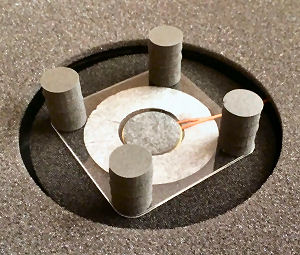
.jpg)
.jpg)
